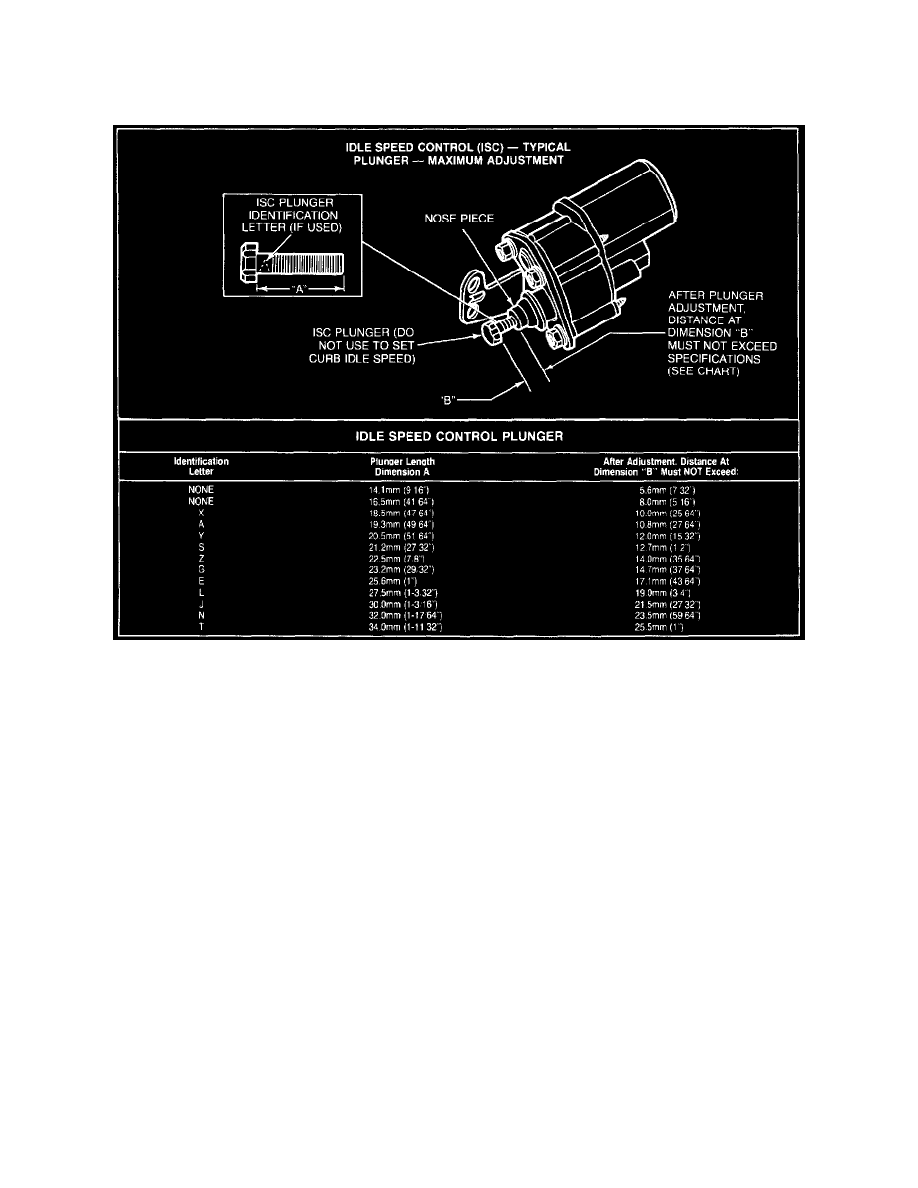Firebird V8-305 5.0L (1982)

Idle/Throttle Speed Control Unit: Adjustments
NOTE: Do not use ISC plunger to adjust curb idle speed, as idle speed is controlled by the Electronic Control Module (ECM). When a new ISC is
installed, or when indicated by the "System Performance Check", a base (minimum authority) and a high (maximum authority) RPM check must be
made, and adjustments performed as needed. When making low and high speed adjustments, low speed adjustment must be performed first.
Fig. 131 Idle Speed Control (ISC) Plunger Specifications
Preliminary Check
1. Check for an identification letter on ISC plunger--Fig 131. If a letter appears, proceed to "Adjustment Procedure".
2. If no letter appears, remove plunger using tool J-29607 or equivalent, and measure distance from back of plunger head to end of plunger
(dimension "A")--Fig 131. Record dimension for use in step 11 of "Adjustment Procedure".
3. Reinstall plunger, turning plunger in to a preset dimension that is less than dimension "B"--Fig 131.
Adjustment Procedure
1. Connect dwell meter to test lead in MC solenoid harness (usually a green wire) and set meter on 6 cylinder scale. Connect tachometer to engine
following manufacturer's instructions
2. Start engine and run at fast idle until it reaches normal operating temperature and dwell reading begins to fluctuate.
3. Stop engine and disconnect wiring bar- ness connector to ISC motor.
NOTE: Do not connect or disconnect wiring harness connector to ILC motor with ignition in on position, as ECM will be damaged.
